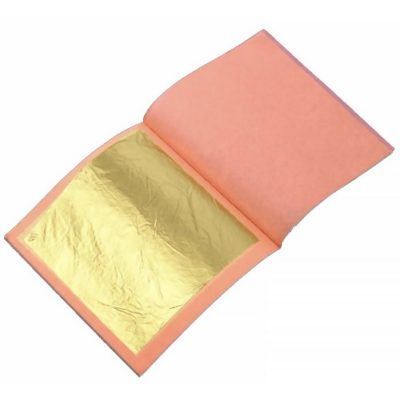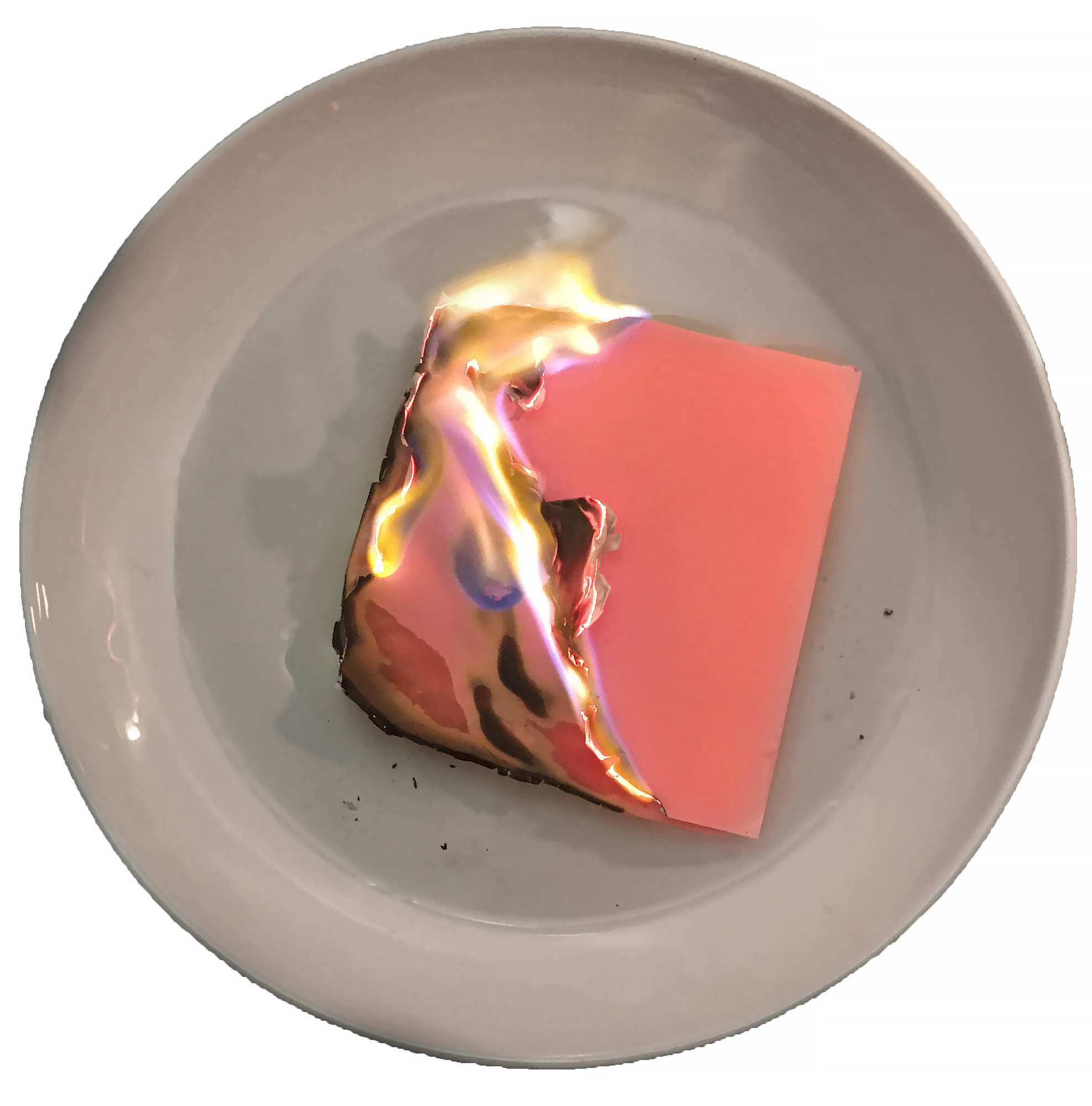Figures 30a, 30b Quote 17 / Recipe 12 / RECONSTRUCTION
“Pampier Swaert. Dit swardt wordt ghemaeckt vande boexckens daer / het gaudt offt silver in gheleijt is, dese boecxkens salmen / ontsteeken met een kerssche , ende laeten branden alssche / gheheel verbrandt sijn dan salmense laeten vallen in / een commeken met water, daer naer salmense wel clijn vrijven (fol. 24v) / vrijven ende opt crijt laeten droogen.”[1]

Several sixteenth- and seventeenth-century authors refer to the burnt paper of goldbeaters-booklets. Some even mention that this specific paper had a red color.[2] This is true, since these papers were coated with red bolus which allowed a color-impression of the gold on red bolus grounds and prevented the gold leaves sticking to the paper.[3]
While gold-leaves were certainly to be found in studios of Burgundian illuminators, none of the fifteenth-century treatises contain any reference to black pigments made from goldbeaters paper-booklets or to burnt paper in general. This is remarkable, because gold-leaf was extensively used in Burgundy, already at the end of the fourteenth century, especially for the gilding of altarpieces, interiors, and painting. Thanks to the meticulous administration preserved in the ducal accounts, the trade in fine gold-leaves amongst other artists’ materials is well documented.[4] They were bought from espiciers situated in Paris, Troyes, and Dijon and were sold as papiers, containing 300 leaves of gold or silver. Adding all gold-leaves that were purchased by way of example in 1385 for artistic purposes, in one year 16,841 leaves of fine gold were bought. From 1375-1416 a total of 167,591 gold-leaves were acquired, an extraordinarily large quantity. Individual gold-leaves were 8-9cm2, hence the paper booklets (papiers) probably had a somewhat larger size of about 10x10cm. Re-using this enormous amount of wastepaper seems sensible. It should be kept in mind that in the northern provinces paper was still an import product. While French and Italian paper mills had existed since much earlier, the first paper mill in the Northern provinces was established in Huy, located between Naumur and Liège, in 1405.[5] Uncoated papers might have been reused as paper for writing notes instead of being burnt.

[1] “This black is made from booklets which contained beaten gold or silver. One should ignite these books with a candle, and let it burn. If they are completely burnt, one should let them fall into a clean bowl with water. Afterwards grind it and let it dry on chalk”, Anonymous. 1600-1650. Schoone consten ende secreten, Rome, Bibliotheca Apostolica Vaticana, Ms. Lat. 7279: fol. 24r, 24v. See https://digi.vatlib.it/view/MSS_Vat.lat.7279; here cited after Braekman. 1994. Antwerpse ‘consten ende secreten’ voor verlichters en ‘afsetters’ van gedrukte prenten: p. 116.
[2] Boltz von Ruffach. 1549. Illuminier Buoch: p. cxvii-cxviii
[3] Lewis. 1763. Commerzium Philosophico-Technicum: p. 49.
[4] Nash. 2010. The Supply, Aquisition, Cost and Employment of Painters’ Materials at the Burgundian Court, c. 1375-1419: p. 101-124 , tab.1 and tab.2; 134-136, tab. 4.
[5] Weiss. 1983. Zeittafel Zur Papiergeschichte: p. 58, 59.
[1] "This black is made from booklets which contained beaten gold or silver. One should ignite these books with a candle, and let it burn. If they are completely burnt, one should let them fall into a clean bowl with water. Afterwards grind it and let it dry on chalk", Anonymous. 1600-1650. Schoone consten ende secreten, Rome, Bibliotheca Apostolica Vaticana, Ms. Lat. 7279: fol. 24r, 24v. See https://digi.vatlib.it/view/MSS_Vat.lat.7279; here cited after Braekman. 1994. Antwerpse ‘consten ende secreten’ voor verlichters en ‘afsetters’ van gedrukte prenten: p. 116.
[1] "This black is made from booklets which contained beaten gold or silver. One should ignite these books with a candle, and let it burn. If they are completely burnt, one should let them fall into a clean bowl with water. Afterwards grind it and let it dry on chalk", Anonymous. 1600-1650. Schoone consten ende secreten, Rome, Bibliotheca Apostolica Vaticana, Ms. Lat. 7279: fol. 24r, 24v. See https://digi.vatlib.it/view/MSS_Vat.lat.7279; here cited after Braekman. 1994. Antwerpse ‘consten ende secreten’ voor verlichters en ‘afsetters’ van gedrukte prenten: p. 116.
[3] Lewis. 1763. Commerzium Philosophico-Technicum: p. 49.
[4] Nash. 2010. The Supply, Aquisition, Cost and Employment of Painters’ Materials at the Burgundian Court, c. 1375-1419: p. 101-124 , tab.1 and tab.2; 134-136, tab. 4.
[4] Nash. 2010. The Supply, Aquisition, Cost and Employment of Painters’ Materials at the Burgundian Court, c. 1375-1419: p. 101-124 , tab.1 and tab.2; 134-136, tab. 4.